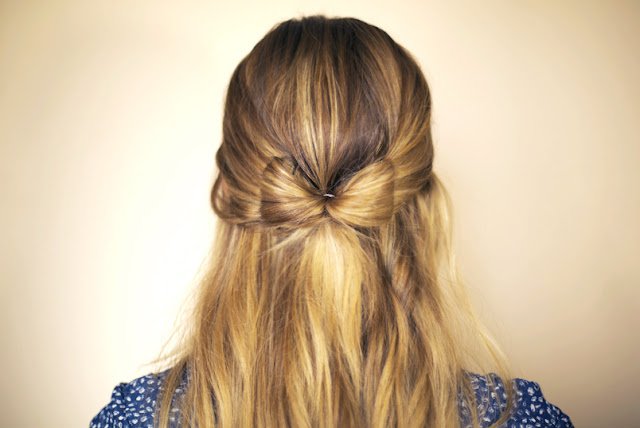How Natural is Natural? 10 Ways to Tell if a Product Is (Or Isn`t) Really Natural
Written by
Beth Greer.
“Natural,” “Nontoxic,” or even “Eco-Safe” on the label of your shampoo,
deodorant or makeup, makes you think it’d be made with healthy,
safety-tested ingredients, right? Well, not always. Unlike drugs, The
FDA
doesn’t review cosmetic or personal care ingredients for safety before
they hit the market. Also, manufacturers routinely do something known as
greenwashing: using misleading, vague or even false claims about the
eco/health benefits of their products. That leaves us wondering whether
our lipstick, skin cream or wrinkle serum is safe.
Reports
say that many contain chemicals linked to cancer, infertility, hormone
imbalances, birth defects, neurological issues and other health
problems.
What we put on our skin matters. Our skin is
not a barrier...it allows microscopic chemicals to enter our
bloodstream which can impact our physiology. What happens inside our
bodies when we are exposed to minute amounts of synthetic chemicals
every day, for years? No one really knows. So it’s best to play it safe
and choose natural, nontoxic products. But, there’s a lot of confusion
when it comes to knowing exactly what to look for on the label. To help
you out, I’ve created my Top 10 Greenwashing Watchwords. These are words
and phrases that will help raise your awareness about the subtle
distinctions and nuances being used on ingredient labels on your makeup
and personal care products.
Top 10 Greenwashing Watchwords
#10. “Environmentally Friendly” “Eco-Safe” There are currently no specific government or
official standards for these terms. Plus, the U.S. Federal Trade Commission (FTC) considers these phrases to be too vague to be meaningful.
#9. “Dermatologist Tested” “Sensitivity Tested” “Hypoallergenic” According to FDA, manufacturers are not required to perform any tests or
provide evidence
that products were actually tested by a doctor. Look for the
organization behind these claims other than the company making the
product.
#8. “Allergy-Friendly Fragrance” “Fragrance-Free” A
product might be made with essential oils instead of synthetically made
fragrance oils (which can be allergy triggers), but also contain
questionable chemicals like DEA, SLS and artificial coloring. “
Fragrance-Free”
does not necessarily mean no fragrance. It might contain synthetic
fragrances that are used to cover up the chemical smell of other
ingredients.
#7. “Nontoxic” Nontoxic does not mean Not Toxic or Not
Harmless. It indicates it’s a safer alternative than some other
hazardous ingredients, and implies it will not cause adverse health
effects. But, there are
no specific government or official standards for this term.
#6.“Derived From...” “Derived from coconut oil,” for example, is deceptive, because to create cocamide DEA from coconut oil requires the use of
diethanolamine – DEA... a carcinogenic synthetic chemical. Therefore, it is no longer natural...or safe.
#5. “Free of...” Watch for hyping what’s NOT in the
product. For example, a deodorant claiming “No CFCs.”
Chloro-fluorocarbons were banned in 1978, so if the product contained
CFCs it would be illegal. Or a cream claiming “No Parabens” but
substituting Phenoxethanol, which, according the
MSDS
(Material Safety Data Sheet), if absorbed through the skin (at 100%
concentration) can cause reproductive damage. Skin creams and baby
lotions generally use 1%. Does that make it safe?
#4. “Certified Green” The term “green” implies a product has some environmental benefit or causes no harm to the environment, but the FTC and the
International Standards Organization (ISO)
consider it to be too vague a word to be meaningful. Also, watch out
for self-made seals. Certified by whom? Choose neutral third party
seals.
#3. “Natural” This word can give the illusion that the
product is “of nature," when it’s not. One large, brand name company
claims "100% NATURAL” on the label of its moisturizers but uses
synthetic surfactants, preservatives and fragrance. That’s not very
natural! However, not all “natural” products are bad! Check the NPA
(Natural Products Association)
Natural Standard for Personal Care Products guidelines.
#2. “Organic” Some major brands say “organic” but
contain few or no organic ingredients. One shampoo company claims their
product creates a "truly organic experience" yet it contains sodium
lauryl sulfate, propylene glycol and D&C color, which are synthetic
chemicals that pose health risks. A study from the
Center for Environmental Health (CEH) found several mislabeled “organic” personal care products.
#1. Made with... The phrases “Made with lavender” or
“Made with real lemon” for example, might be only contain 1 % of those
ingredients, with the rest being synthetic. Or “Made with essential
oils” might be only 1or 2 drops of the good stuff. Look for a percentage
on the label to be sure.
My advice? Read makeup and personal care ingredient labels like you
would food labels. Learn which chemicals to avoid. Here’s a list from
the
Campaign for Safe Cosmetics.
For more practical, simple solutions on how to have a super healthy home or work environment, visit
www.BethGreer.com

















